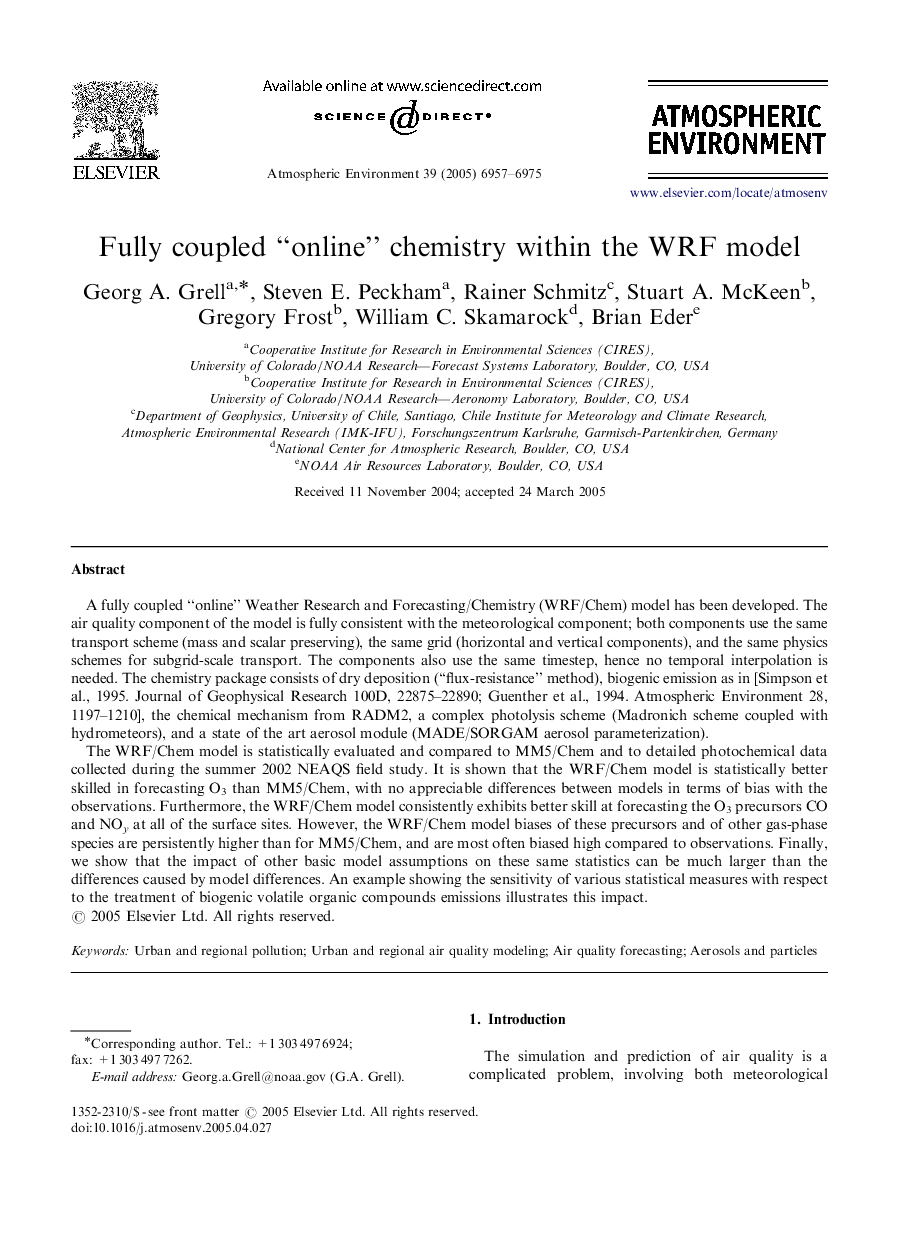| کد مقاله | کد نشریه | سال انتشار | مقاله انگلیسی | نسخه تمام متن |
|---|---|---|---|---|
| 4445007 | 1311265 | 2005 | 19 صفحه PDF | دانلود رایگان |

A fully coupled “online” Weather Research and Forecasting/Chemistry (WRF/Chem) model has been developed. The air quality component of the model is fully consistent with the meteorological component; both components use the same transport scheme (mass and scalar preserving), the same grid (horizontal and vertical components), and the same physics schemes for subgrid-scale transport. The components also use the same timestep, hence no temporal interpolation is needed. The chemistry package consists of dry deposition (“flux-resistance” method), biogenic emission as in [Simpson et al., 1995. Journal of Geophysical Research 100D, 22875–22890; Guenther et al., 1994. Atmospheric Environment 28, 1197–1210], the chemical mechanism from RADM2, a complex photolysis scheme (Madronich scheme coupled with hydrometeors), and a state of the art aerosol module (MADE/SORGAM aerosol parameterization).The WRF/Chem model is statistically evaluated and compared to MM5/Chem and to detailed photochemical data collected during the summer 2002 NEAQS field study. It is shown that the WRF/Chem model is statistically better skilled in forecasting O3 than MM5/Chem, with no appreciable differences between models in terms of bias with the observations. Furthermore, the WRF/Chem model consistently exhibits better skill at forecasting the O3 precursors CO and NOy at all of the surface sites. However, the WRF/Chem model biases of these precursors and of other gas-phase species are persistently higher than for MM5/Chem, and are most often biased high compared to observations. Finally, we show that the impact of other basic model assumptions on these same statistics can be much larger than the differences caused by model differences. An example showing the sensitivity of various statistical measures with respect to the treatment of biogenic volatile organic compounds emissions illustrates this impact.
Journal: Atmospheric Environment - Volume 39, Issue 37, December 2005, Pages 6957–6975